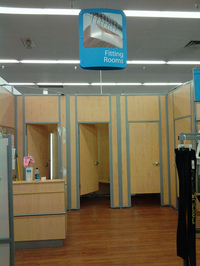- Related topics: Below you will find more in depth information on this topic...
-
A Complete Breakdown of Nigerian Clothing
-
African Clothing: What do the colors mean?
-
Black Panther Movie - Clothing of Wakanda
-
What exactly is a Dashiki?
Share Your Style
Style Icons
A Complete Breakdown of Nigerian Clothing
Fashion in NigeriaNigeria is one of the few countries in Africa that has managed to hold on to its traditional clothing. Many African nations and their dressing cultures have been influenced substantially by western clothing. Nigeria has not been completely immune to the noticeable transformation of sensibilities pertaining to design but it still uses generous doses of its cultural symbols, traditional colors and native styles in almost all apparel that the Nigerians wear.
In recent years, the fashion industry in Nigeria has witnessed unprecedented growth and evolution, leading to the emergence of several native designers who have not shied away from showcasing their unique ethnic designs and structures of clothing, religious and cultural symbolisms as well as their transforming hairstyles, makeup and fashion accessories. The New Fashion Week in the country has been generating more traction with each passing year.
Traditional Nigerian Clothing
The global fashion scene has been largely dominated by Europe and North America. A long held belief in the west is that African fashion or Nigerian clothing in particular is mostly functional, the styles and choice of colors have more to do with the climate and hence environment without much heed to what is deemed as fashionable or in vogue. This couldn't be farther from the truth.
Nigerian clothing is indeed functional and it has always been so. However, the use of colors and patterns has more to do with cultural symbolism and fashion than mere purpose or functionality. Nigerian clothing is more decorative with the approach to painting and patterns, scarring, tattooing and accessories including jewelry and headgear.
The best example of functionality in Nigerian clothing is in the stark differences among the choice of apparels of people working in different professions. The choice is clearly dictated by practicality. This doesn't take anything away from the fact that Nigerians can don a special avatar with their clothing for the right time and occasion.
Evolution of Nigerian Clothing
Nigeria has hundreds of different ethnic groups. Most of these groups had a traditional garb that was worn all the time. This practice changed with colonization. However, the traditional elements are still dear to almost all the tribes or ethnicities.
For instance, the Edo people or the Afemais, Binis and Esan among others belonging to the Benin Kingdom wear colorful clothes and use lots of beads. This symbolizes their erstwhile royalty and also stands for freedom. People of the Urhobo or Isoko ethnic groups are more into lace shirts and wrappers, cowboy hats, beads and walking sticks.
Yoruba people living in the southwest and north central parts of Nigeria in the states of Oyo, Lagos, Ekiti, Kogi, Kwara, Ogun, Osun and Ondo wear what they call sokoto and buba, often complemented by an agbada and fila. Agbada is a large cloth worn as you would wear a jacket and fila is their traditional cap. Women wear the traditional buba with iro, gele and ipele. Gele is a headgear and ipele is worn over shoulders. Ipele and gele usually have matching colors and designs or patterns. The buba worn by men is similar to a shirt and the buba worn by women is similar to a top with a low round neck.
Igbo people in southeast and southern Nigeria in the states of Imo, Enugu, Rivers, Abia, Delta, Ebonyi and Anambra wear different types of clothing such as Ika, Mbaise, Orly and Aniocha. People of the Hausa region in north Nigeria, along with the peoples of Fulani and Kanuri regions, traditionally wear a kaftan. You would notice many similarities and differences as you explore the traditional Nigerian clothing of the peoples of Efik, Annang, Ibibio, Eket, Oron, Ijaw and Itsekiri regions.
Contemporary Nigerian ClothingThe last two to three decades have ushered in a sea change in Nigerian clothing. Globalization and increasing westernization are the two major influencing factors here. You would find everything from shirts and t-shirts to tank tops and pencil skirts, gowns to trousers, denims to cargos, the popular formalwear or semiformal and casual wear, hats and caps, western accessories and design sensibilities. However, the clothes made in the country are still rich in the traditional colors of gold, blue, white, maroon, black, red, yellow, green and pink among others. You would still find a dominance of floral prints, symbols of animals, rich patterns and the common stripes, as well as embroidery.
Be the first to comment
Other Topics
 Why Sharing Your Clothes Is Not A Good IdeaMost people at one time or another has loaned a sibling, friend or a roommate an article of clothing from their wardrobe. In some cases, siblings or r...Read the rest of this fashion article.
Why Sharing Your Clothes Is Not A Good IdeaMost people at one time or another has loaned a sibling, friend or a roommate an article of clothing from their wardrobe. In some cases, siblings or r...Read the rest of this fashion article. When did Guys wearing Skinny Jeans become Acceptable?Not too long ago, skinny jeans were completely rejected by men, including fashion designers. Even today, skinny jeans are not generally approved of or...Read the rest of this fashion article.
When did Guys wearing Skinny Jeans become Acceptable?Not too long ago, skinny jeans were completely rejected by men, including fashion designers. Even today, skinny jeans are not generally approved of or...Read the rest of this fashion article. Kylie Jenner A Fashion Mogul?Kylie Jenner is a fashion icon. There is no debating that. Whether or not she is a fashion mogul is yet to be ascertained. The American model and entr...Read the rest of this fashion article.
Kylie Jenner A Fashion Mogul?Kylie Jenner is a fashion icon. There is no debating that. Whether or not she is a fashion mogul is yet to be ascertained. The American model and entr...Read the rest of this fashion article. Should Your Boyfriend Like the Way You Dress?Lets face it, what girl doesn't like to dress good and look sexy from time to time. You occasionally like to dress in that low-cut top, short dress or...Read the rest of this fashion article.
Should Your Boyfriend Like the Way You Dress?Lets face it, what girl doesn't like to dress good and look sexy from time to time. You occasionally like to dress in that low-cut top, short dress or...Read the rest of this fashion article. How Much Cleavage Is Too MuchBelieve it or not but breasts have etiquette's attached to them and in life, it is important for a woman to understand the whole concept of how much c...Read the rest of this fashion article.
How Much Cleavage Is Too MuchBelieve it or not but breasts have etiquette's attached to them and in life, it is important for a woman to understand the whole concept of how much c...Read the rest of this fashion article. Fitting Room EtiquetteFitting rooms, or as I call them, The AA Room (Addicts Anonymous Room, I will explain later) in clothing stores are not a requirement but are favorabl...Read the rest of this fashion article.
Fitting Room EtiquetteFitting rooms, or as I call them, The AA Room (Addicts Anonymous Room, I will explain later) in clothing stores are not a requirement but are favorabl...Read the rest of this fashion article. How to Dress Like a RockstarDo you know how to dress like a rockstar? Well to dress like a rockstar you need to have lots of funky fashion. Don't be afraid to express yourself. e...Read the rest of this fashion article.
How to Dress Like a RockstarDo you know how to dress like a rockstar? Well to dress like a rockstar you need to have lots of funky fashion. Don't be afraid to express yourself. e...Read the rest of this fashion article. Ashley Benson's Fashion Sense
Ashley Benson is an up and coming actress from the popular ABC television series pretty little liars. Ashley Benson plays Anna Marin a popular 'it...Read the rest of this fashion article.
Ashley Benson's Fashion Sense
Ashley Benson is an up and coming actress from the popular ABC television series pretty little liars. Ashley Benson plays Anna Marin a popular 'it...Read the rest of this fashion article. Everything you need to know about Big Baller BrandBig Baller Brand, trademarked as BBB, is an apparel and footwear company based at Chino Hills, California in the United States. The private company wa...Read the rest of this fashion article.
Everything you need to know about Big Baller BrandBig Baller Brand, trademarked as BBB, is an apparel and footwear company based at Chino Hills, California in the United States. The private company wa...Read the rest of this fashion article.



















